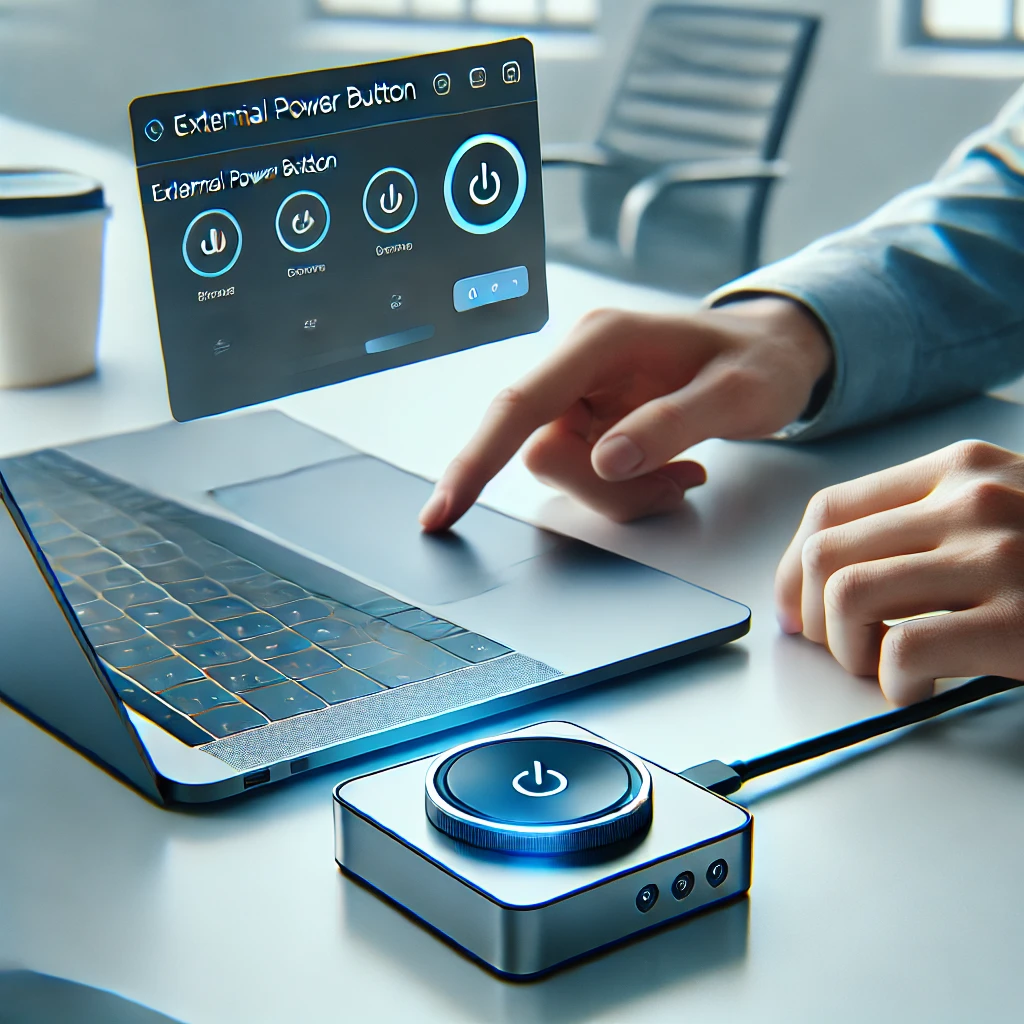You’ve probably faced this situation before: your laptop’s power button is either broken or hard to reach, and you’re looking for a solution to easily turn your laptop on or off using an external power button.
Well, configure external power button on a laptop is actually possible, and it can be a game-changer, especially if your laptop is mounted in a place where the built-in button is inaccessible. This guide will walk you through the process, giving you a better understanding of the options available to set up an external power button.
What is an External Power Button on a Laptop?
Before we jump into the configuration process, let’s clear up what exactly an “external power button” is.
An external power button refers to an additional physical button connected to your laptop, which you can use to turn the device on or off. This can come in handy in certain situations, like if the internal button is not responsive or if you’re using your laptop in a setup that makes the internal button hard to reach.
Now, let’s get into how you can set this up for your device.
Why Should You Configure an External Power Button?
So, why would you even bother to configure an external power button on your laptop?
Here are a few reasons that might make this feature a must-have for you:
- Broken Internal Power Button: If the built-in power button is damaged or stuck, having an external button will let you power up or shut down your laptop without any hassle.
- Convenience in Custom Setups: If your laptop is in a unique setup, like inside a car mount or a custom stand, an external power button allows you to manage the power function without reaching around the laptop.
- Improved Accessibility: In certain situations, especially for users with mobility challenges, an external power button might be easier to reach and use.
How to Set Up an External Power Button on Your Laptop
Step 1: Check Laptop Compatibility
Before anything, you need to check whether your laptop supports an external power button setup. While most modern laptops are versatile, not all of them will allow for easy integration with external hardware.
For Windows laptops, this is usually a matter of configuring some BIOS/UEFI settings or using specific software to allow the laptop to recognize an external button.
For Macs, the process might be a bit trickier and might require additional tools or adapters to interface with the laptop.
Step 2: Gather the Right Tools and Materials
To configure an external power button, you’ll need a few items:
- External Power Button: You can buy a pre-made external power button or use a simple push-button switch. There are plenty of options on online marketplaces like Amazon or eBay.
- Adapter Cables: Depending on your laptop, you might need adapter cables to connect the button to the laptop’s motherboard. These can usually be found at any local electronics store.
- Basic Tools: A small screwdriver to open up the laptop, and possibly some soldering equipment if you’re feeling hands-on.
Step 3: Open Your Laptop and Identify the Power Button Pins
Once you’ve gathered your materials, it’s time to open up your laptop.
Make sure you power off your laptop and unplug it from any power sources.
- Remove the Back Panel: Use a screwdriver to take off the back panel or the battery compartment of your laptop, depending on the design.
- Locate the Power Button Pins: Inside the laptop, you should find the motherboard, where the power button’s pins are located. You can usually spot these by checking the area near the power button itself.
Take note of which pins are connected to the power button circuit.
Step 4: Wire the External Power Button
Next, it’s time to wire up your external power button.
- Connect the Button to the Pins: Use the adapter cables to connect your external power button to the power button pins on your laptop. If you’re using a simple push-button switch, make sure the wiring is done correctly so that the circuit will be completed when the button is pressed.
- Soldering (Optional): If you’re comfortable with soldering, you can solder the cables directly to the power button pins. This ensures a solid and long-lasting connection.
- Secure the Button: Once the wiring is done, secure the external button to a location that’s convenient for you. You can mount it on your desk, under your laptop stand, or wherever you can easily reach it.
Step 5: Test the Setup
After everything is connected, it’s time to test the setup.
Press the external power button and see if it turns your laptop on or off. If everything is wired correctly, your laptop should power up or shut down without a hitch.
If it doesn’t work, double-check the wiring and ensure the correct pins were connected.
Troubleshooting Tips for Your External Power Button
Sometimes things don’t go as smoothly as planned, and you might face a few hiccups in the process. Here are a couple of common issues and how to fix them:
- Laptop Won’t Turn On: Double-check the wiring. Ensure that the external power button is correctly connected to the power button pins.
- Button Isn’t Responsive: Test the external button with another device (like a multimeter) to ensure the switch is functional.
- Interference with Other Buttons: In some cases, connecting an external power button could interfere with the built-in one. If this happens, try disconnecting the external button and see if the internal button works again.
FAQs about Configure External Power Button on a Laptop
Can I Use Any Button for the External Power Button?
Yes, you can use any simple push-button switch as long as it has two terminals that can be wired to your laptop’s power button pins.
Will Configuring an External Power Button Void My Laptop’s Warranty?
If you’re opening up your laptop, it may void your warranty, especially if you’re making any permanent modifications to the internal components. Always check with your manufacturer’s warranty terms before proceeding.
How Do I Know If My Laptop Supports External Power Buttons?
Check your laptop’s documentation or BIOS/UEFI settings to see if there’s an option for external peripherals or custom power setups.
Conclusion
Configure external power button on a laptop can be a handy solution, especially if you’re dealing with a broken internal button or have a unique laptop setup that makes the power button hard to access. With the right tools and a bit of patience, you can easily set up an external button to power your laptop on or off.
Now that you know how to configure an external power button on a laptop, you can enjoy a smoother and more accessible way to manage your device’s power!



